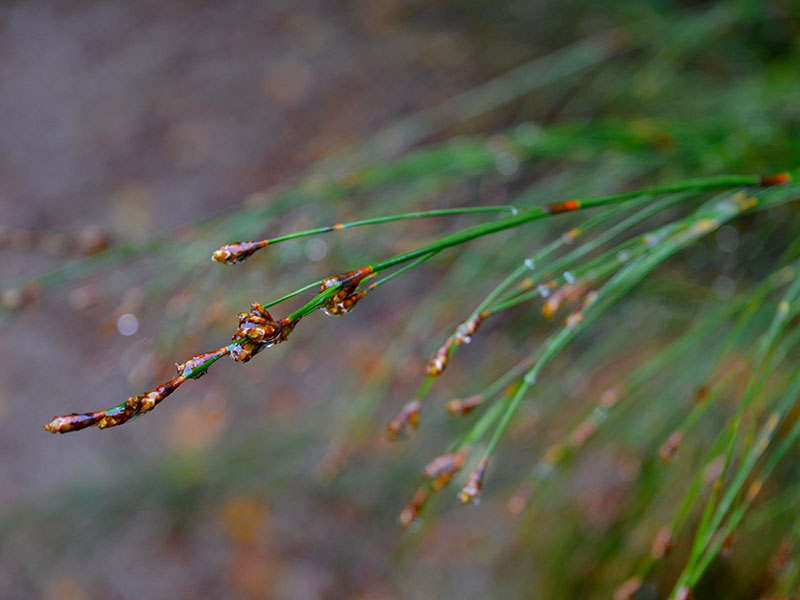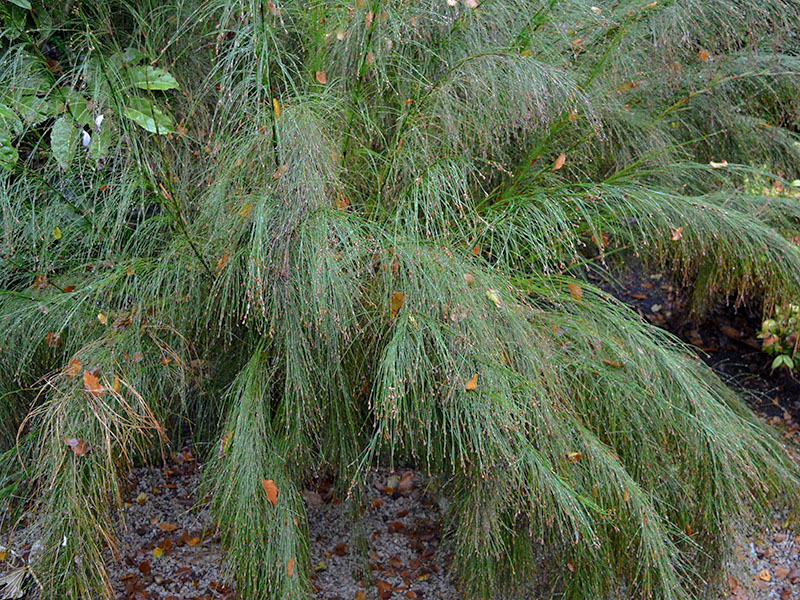Ischyrolepis subverticillata (Restio, Broom Restio, Dune Restio)
Botanical Information
| Family | Restionaceae |
| Genus | Ischyrolepis |
| Species | subverticillata |
| Synonyms | Restio ferruginosus, Ischyrolepis subverticillata, Restio microstachys, Restio subverticillatus |
| Category | Perennials |
| Type | Shrub (evergreen) |
| Origin | Native to South Africa. |
Details
| USDA Hardiness Zone | 8 - 9 |
| USDA Hardiness Ref. | |
| Canadian Hardiness Zone | Requires cold season protection under glass. |
| Canada Hardiness Ref. | |
| RHS Hardiness Zone | H5 - H3 |
| RHS Hardiness Ref. | |
| Temperature (°C) | -10 - 1 |
| Height | 1.5 m |
| Spread | 1.5 m |
| Flowering Period | March, April |
Description and Growing Information
| General Description | It has a very distinctive growth form with cane-like stems, which have soft green whorls of modified branches at each node. |
| Shape | Arching and clump-forming. |
| Landscape | It can be planted in the garden but will also do well in a pot on a patio or on a terrace. |
| Propagation | By division or seed. |
| Cultivation | Grow in full sun or dappled shade, in moist, well-drained soil. Avoid planting in alkaline soils and plant in a spot with plenty of air movement. |
| Notable Specimens | Glendurgan Garden, Mawnan Smith, Falmouth, Cornwall, United Kingdom. |
| Habitat | This species occurs naturally in the Betty’s Bay area from as close as 50 m from the sea to high up in the Kogelburg Nature Reserve where it can be found in full sun or light shade. |
| Bark/Stem Description | Stems erect, 1.2 -1.5 m high, thick, terete, purple-spotted, and much branched. |
| Leaf Description | Strong upright culms with very decorative feathery foliage arranged in whorls. |
| Flower Description | Male and female flowers are produced on separate plants, the female flowers are white, the male flowers greenish-yellow. |
| Fruit Description | Shiny brown nutlets. |
Photographs
Ischyrolepis subverticillata, form. Glendurgan Garden, Mawnan Smith, Falmouth, Cornwall, United Kingdom.
Ischyrolepis subverticillata, leaf. Glendurgan Garden, Mawnan Smith, Falmouth, Cornwall, United Kingdom.

Ischyrolepis subverticillata, form. Glendurgan Garden, Mawnan Smith, Falmouth, Cornwall, United Kingdom.

Ischyrolepis subverticillata, autumn form. Trengwaighton Garden, Madron, Cornwall, United Kingdom. 16/10/2019.